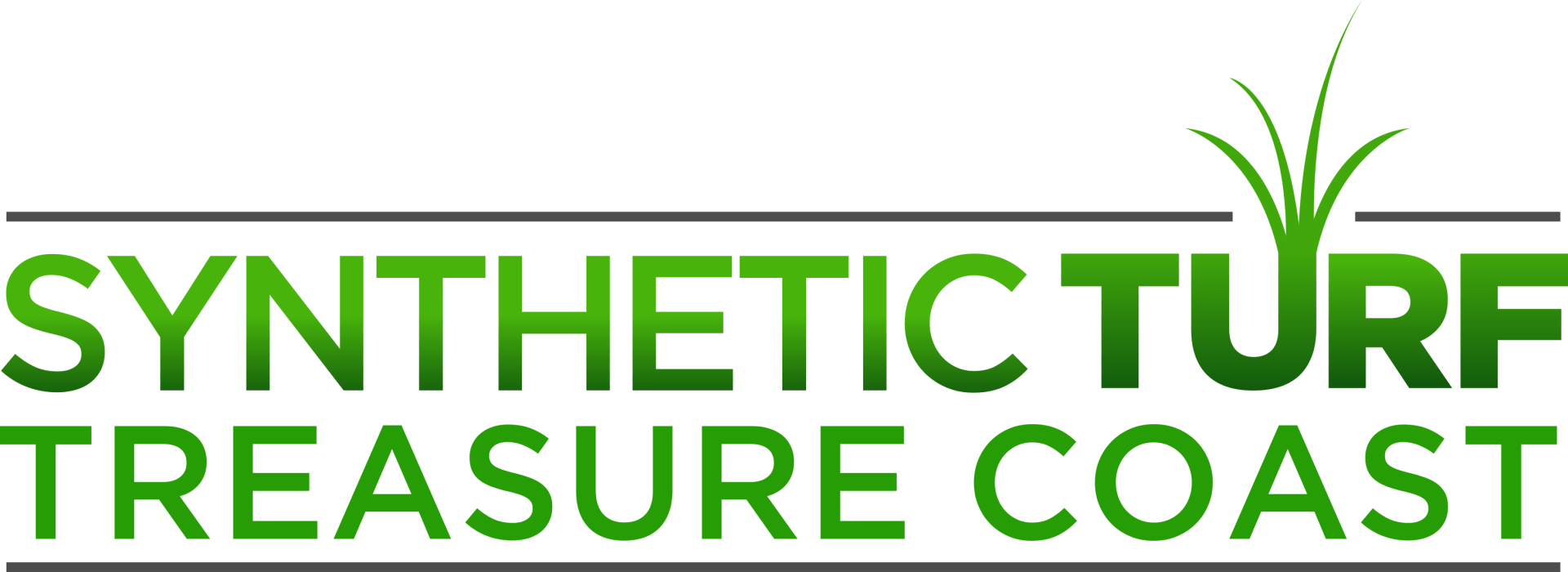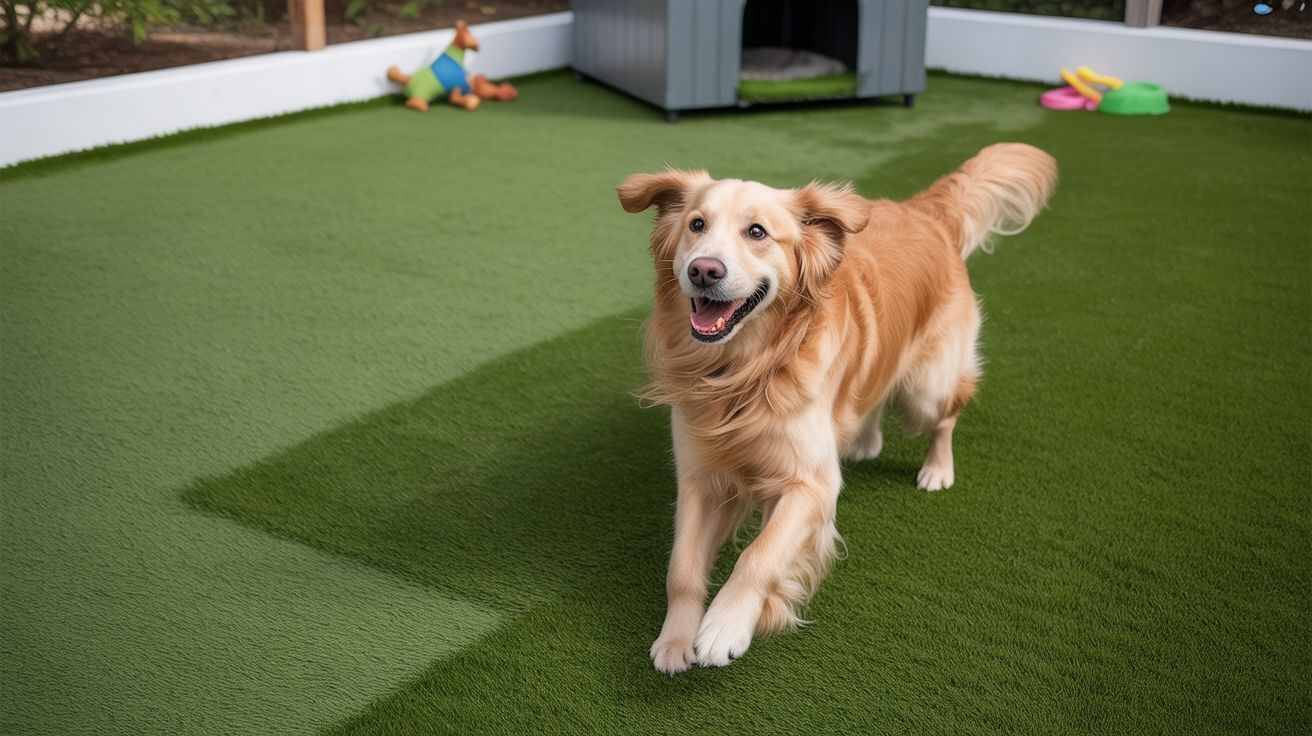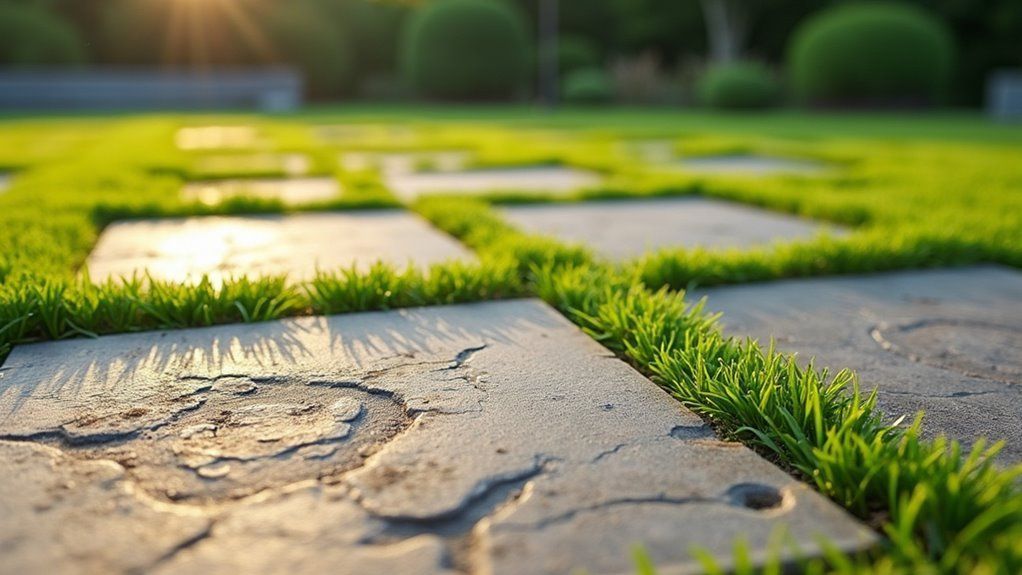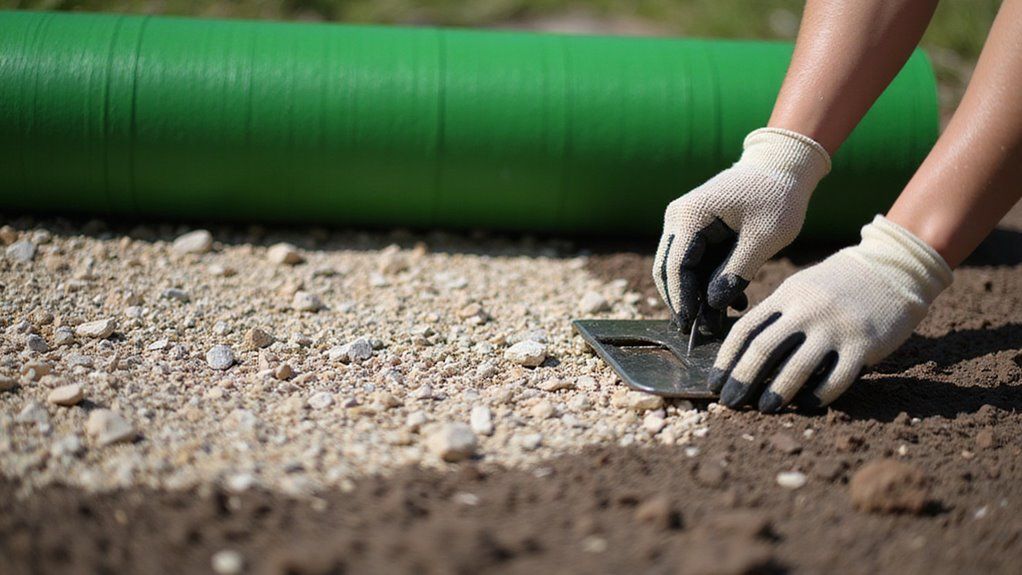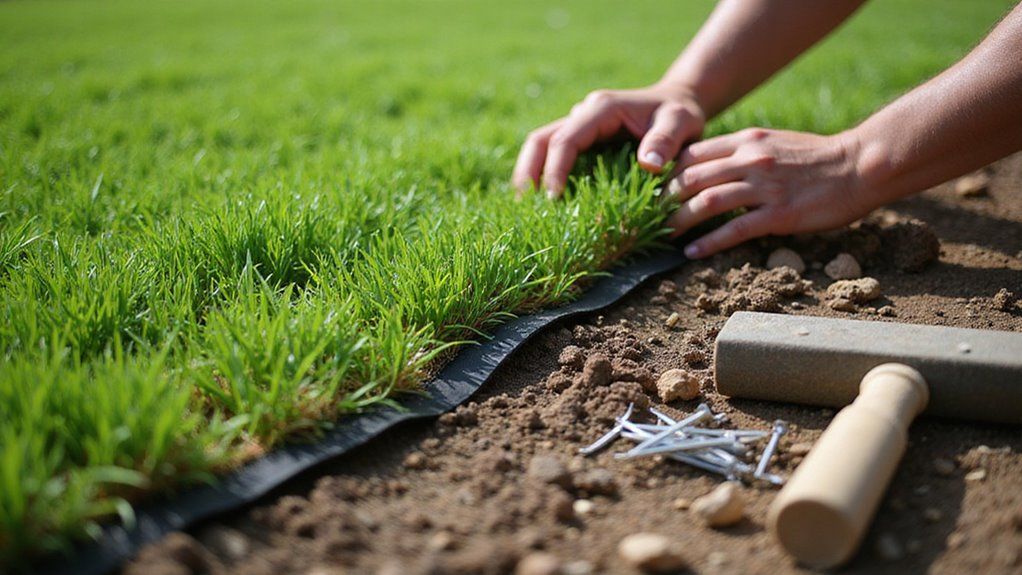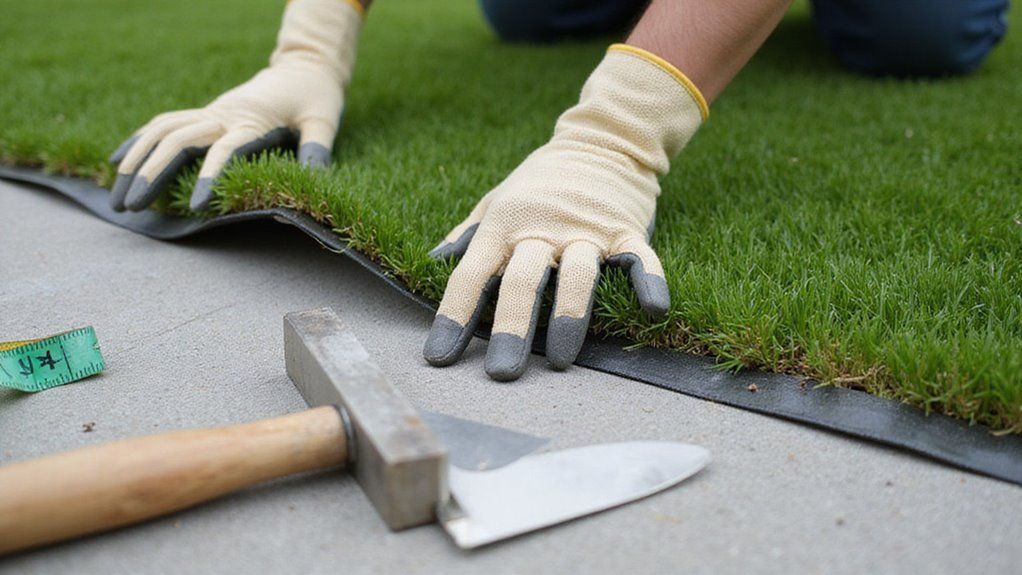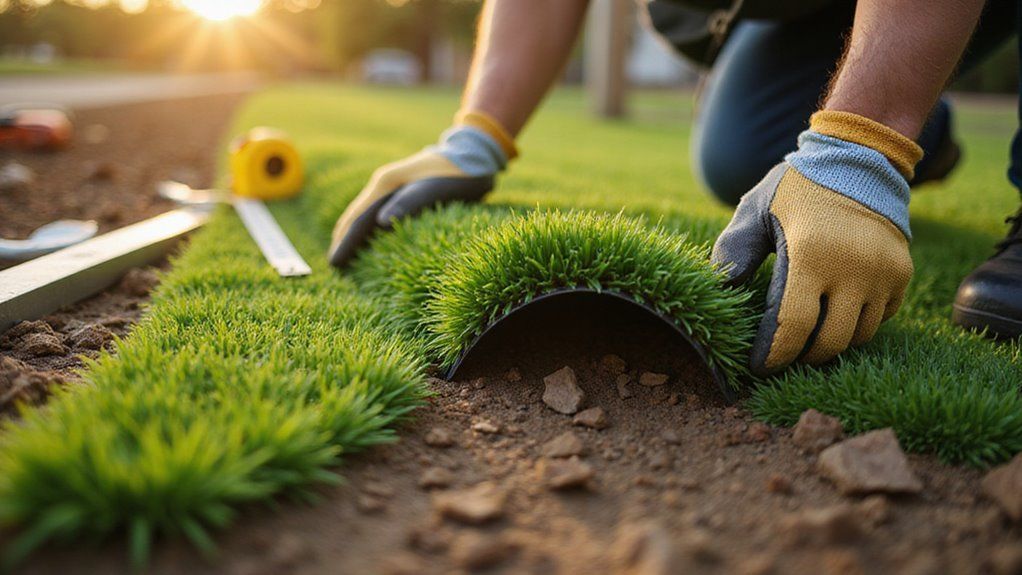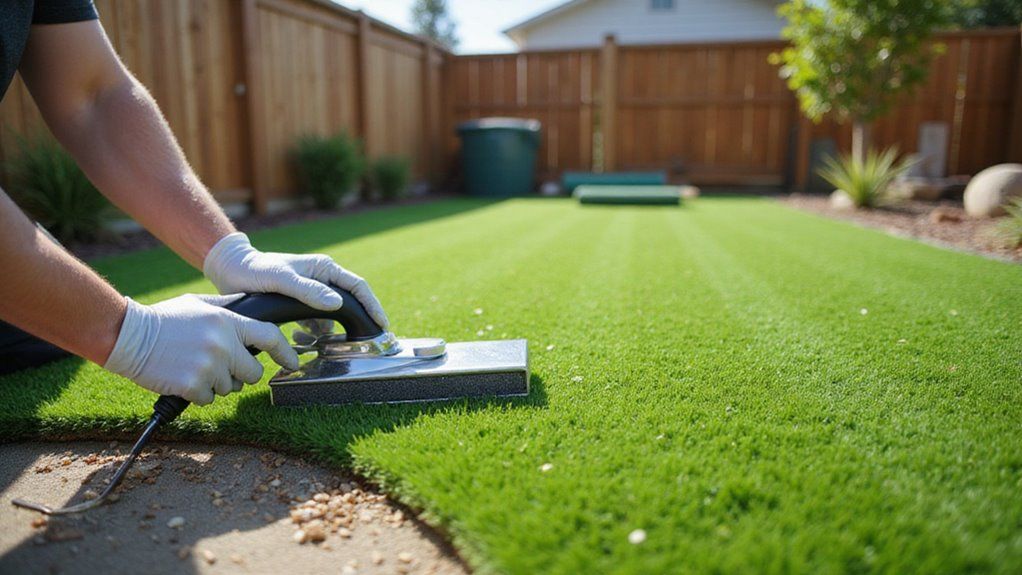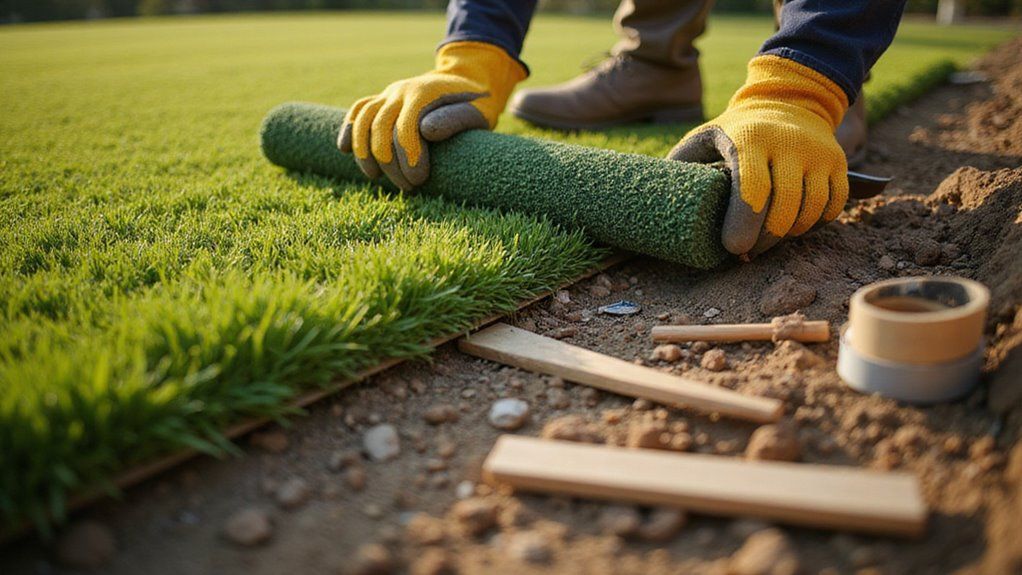How to Lay Artificial Grass on Concrete and Stone?

Artificial grass installation is a great option for homeowners who want to update their concrete or stone areas.
It works well on patios, walkways, and gravel spots, providing a nice look with less upkeep than real grass. With the right tools and careful preparation, you can install a strong and colorful artificial lawn.
This guide shows you how to install artificial grass on concrete and stone easily. It also shares the benefits, the tools you need, and the steps to help you create the outdoor space you want.
Key Highlights
- Artificial grass can be easily installed on concrete, stones, gravel, or patios, enhancing outdoor spaces.
- Preparation involves cleaning, leveling, and ensuring proper drainage.
- Essential tools include sharp knives, adhesive, joining tape, shock pads, and a stiff broom.
- Benefits include low maintenance, durable surfaces, and improved safety features like slip resistance.
- Proper installation steps help maximize grass lifespan while maintaining aesthetics.
- Artificial grass can be secured with glue or carpet tacks for a lasting, pristine look.
Benefits of Laying Artificial Grass on Concrete and Stone
Installing artificial grass on concrete or stone offers many benefits. One major benefit is its appearance—it provides a rich, green look without needing a lot of gardening work. Furthermore, artificial grass is flexible and works well on uneven surfaces, making it a smart option for tricky areas.
This choice also cuts down on the work you need to do. Synthetic grass remains green throughout the year, so you won’t have to worry about watering, mowing, or pulling weeds. With its strength and lasting beauty, artificial grass can change dull spots into welcoming places.
Enhancing Aesthetics with Minimal Effort
Artificial grass is a great way to make outdoor spaces look nice without the work that comes with a real lawn. Its rich green color can instantly improve patios, walkways, and even places that are usually dull, like gravel or concrete. Ordinary outdoor areas look inviting and bright with the vibrant touch of artificial turf.
It takes very little effort to keep things looking good. After you install it, your artificial grass stays tidy without needing water or cutting. You won’t have to spend time fighting weeds, which lets you enjoy your space even more.
Plus, artificial turf is very easy to customize. Whether you want a fun play area for kids or a chic spot for garden furniture, synthetic grass offers many choices. With its always green look, artificial grass makes any outdoor space shine, looking perfect with minimal care.
Long-Term Durability and Low Maintenance
Durability is a key benefit of artificial grass, making it a wise choice. Synthetic grass can hold up against heavy foot traffic, changing temperatures, and tough weather. It keeps its bright look because of its strong build. Unlike real grass, which can get damaged easily, artificial turf stays looking good for years.
Caring for artificial grass is simple and easy. There is no need to mow or water it. Just a little brushing and cleaning now and then will keep your turf looking clean and colorful. Synthetic grass is also good at resisting stains and does not get harmed by dog urine or spills.
Moreover, its sturdy fibers stay up well, even with regular use. Using sand infill makes it even tougher by stabilizing the grass and stopping it from flattening. Whether it’s for walkways, patios, or play areas, the low upkeep of artificial grass is great for homeowners who want long-lasting solutions.
Safety Features: Slip Resistance and Cushioning
Artificial grass has great safety features. It is slip-resistant and offers cushioning that natural grass might not provide. This type of grass is water-resistant, which helps keep it less slippery. This makes it a safe option for homes with kids or older people. Even if it rains, synthetic turf stays a good surface for outdoor fun.
Cushioning is also an important safety benefit of artificial grass. Shock pads installed underneath add a soft layer that protects users. This is especially helpful in play areas since falls can happen often. Artificial grass provides a safer landing than hard surfaces like concrete.
In addition, synthetic grass removes dangers like sharp stones or uneven ground. With its smoothness and slip resistance, artificial grass gives peace of mind. Homeowners can confidently use their outdoor spaces. Whether it is for playing or just relaxing, it makes a safe and comfortable place for everyone to enjoy.
Preparatory Steps Before Installation
Preparation is very important for a great artificial grass installation. Start by checking your concrete or stone surface. Make sure it is clean, stable, and has good drainage. You can fix small cracks with leveling compounds. Bigger damage may need more help.
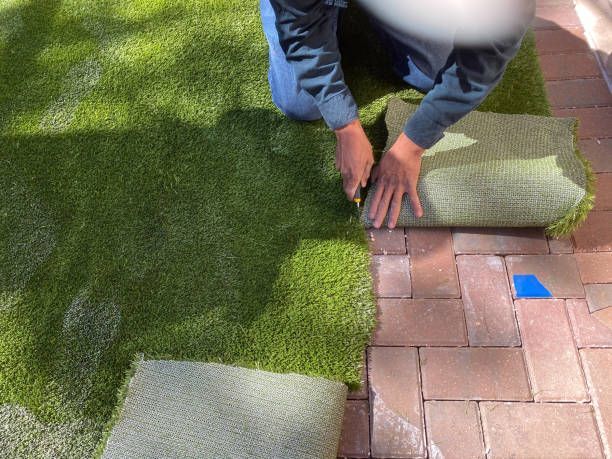
After the surface is smooth and clean, add a weed barrier or an underlay to create a strong base. If there are drainage issues, drill holes or channels to stop water from staying on the surface. Once you have a strong base, you’re all set to move on to the installation phase and make a durable artificial lawn.
Assessing the Suitability of Your Concrete Surface
Assessing your concrete surface is the first step for a good installation. Check to see if the surface is stable. It should be flat and should have no loose or wobbly slabs. These problems can disrupt your artificial grass. If you find any large cracks wider than 20mm, fix them with the right patching compounds to make an even base.
You can fix small bumps or uneven spots using a layer of sand or leveling compound. Undulations that are less than 20mm are usually okay, but anything larger may hurt the turf’s look. If the concrete is badly damaged, think about replacing it or adding a new underlayer.
Drainage is also very important. Test your surface by pouring water on it. If you see puddles, that means there is bad drainage. You need to drill drainage holes where needed to let water flow off properly. By making sure your concrete meets these standards, you will have fewer problems during installation, and your artificial grass will last longer and look better.
Necessary Cleaning and Levelling
Proper cleaning and leveling of the base are very important for a great artificial grass installation. First, clear away dirt, debris, or mold using a stiff broom and a hose. Having a clean base helps the adhesive stick well and stops problems with drainage or settling later on.
Next, check the surface for cracks, bumps, or uneven spots. Use leveling compounds for small cracks to make a smooth finish. For bigger issues, fill gaps and level the surface with sand and a screed bar. Make sure every area is compact and firm.
This step is especially important for surfaces with big dips or bumps. If the leveling is poor, it can make the turf uneven, which can shorten its lifespan and look bad. Taking the extra time to clean and level your base ensures good adhesion, smooth installation, and a beautiful turf you will enjoy for years.
Ensuring Proper Drainage Solutions
Drainage solutions are very important when installing artificial grass. If there is not enough drainage, water can build up under the grass. This can weaken the adhesive and cause soggy spots. Start by checking how well the drainage works using a garden hose. If you see puddles, you need to fix that.
Drill holes at regular intervals in the base. This helps to direct excess water away. If drainage problems are serious, combine the holes with channels to improve water flow. You can also create a slight slope in the surface to help water flow naturally.
When you install artificial grass over surfaces like gravel or pavers, make sure the base allows water to move through. Use sand as a stabilizer to fill in gaps and help with drainage. Good drainage stops water damage. It also helps your synthetic turf last longer, ensuring it remains strong and works well over time.
Essential Tools and Materials Needed
A successful artificial grass installation begins with the right tools and materials. You’ll need basic items like a tape measure, a sharp knife, a garden rake, and a broom for preparation. You also need essential materials such as adhesive, jointing tape, and silica sand to secure the grass and keep it looking good.
Optional accessories can make the job easier. For example, shock pads add cushioning, and weed barriers offer extra protection. With these tools ready, you can move forward confidently to install a neat and durable artificial lawn on your concrete or stone surface.
List of Basic Tools for Installation
Essential tools are key for a good artificial grass installation. A utility knife is important for cutting exact pieces of synthetic turf. A rake and broom help keep the surface smooth and clean on existing concrete or stone. It’s good to have artificial grass tape and glue ready.
They are useful for joining seams to create a seamless finish. A trowel may be needed to spread the adhesive evenly, and a hammer helps add stability. These basic tools make the installation process smooth and organized for your artificial lawn.
Additional Helpful Accessories
Installing artificial grass can be easy if you have the right accessories. Use a utility knife for cutting and making adjustments. This will help you create a smooth fit around edges and obstacles. A sturdy broom is good for spreading infill evenly.
You can use a trowel to apply adhesive, especially to secure seams well. A hose is useful for cleaning up any excess materials to make everything look nice. Finally, a heavy object is important for keeping pieces of artificial turf in place while they dry.
Selecting the Right Type of Artificial Grass
Choosing the right artificial grass is important for getting a natural and lasting look. Pick a product that mixes fibers of different heights. This helps make it look more like real grass. Look for options that have UV protection.
This feature helps the synthetic turf stay strong and not fade in the sun. Also, check the density and weight per square meter. Heavier turf usually handles foot traffic better. Lastly, make sure to check for drainage features. This can help reduce puddles and improve how the turf works, especially when it rains.
Detailed Step-by-Step Installation Guide
Each step of the installation needs careful work and focus. First, get the surface ready. Clean the existing concrete or stone. Make sure the drainage holes are clear to stop water from building up. Next, roll out the artificial grass.
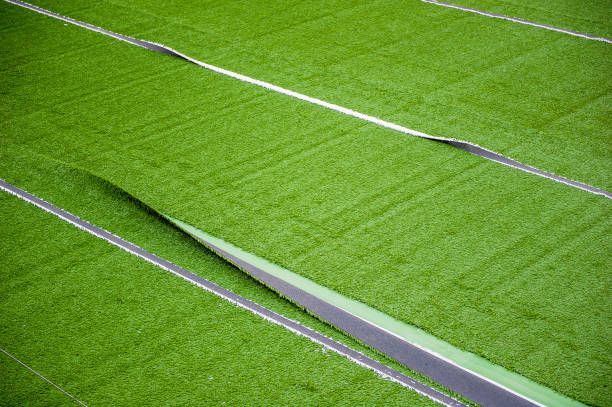
It should lie flat and not have any wrinkles. Trim the grass so it fits well. This way, you have smooth edges before you add a layer of glue around the perimeter. Finally, use a good infill, like silica sand, to help the turf stay stable and last longer under foot traffic.
Step 1: Prepare the Surface
Preparing the surface is an important first step for installing artificial grass. Start by making sure the existing concrete or stone is clean and has no problems. Use a broom to sweep away dust and small pieces. You can also use a hose to wash off tough stains.
If the surface is uneven, you might need to add a layer of cement or leveling compound. This careful preparation will help with a good installation. Your synthetic turf will stick well and lay flat across the entire area.
Step 2: Roll Out the Artificial Grass
After you prepare the surface, the next step is to roll out the artificial grass. Start by unrolling the pieces of artificial grass over the area. Make sure each roll fits nicely with the edges.
This way, you can reduce the chance of wrinkles and creases that may change how it looks in the end. Let the synthetic turf settle slowly to make sure it lies flat and even. If you are working outdoors, pay attention to drainage. Any excess grass should be a bit over the perimeter so you can trim it later.
Step 3: Trim and Adjust the Grass Layout
Trimming and shaping your grass layout are important for a smooth look on your artificial lawn. Begin by using a utility knife. This helps cut the edges so that they fit well around corners and other obstacles. Keep an eye out for any mistakes.
These imperfections can cause wrinkles or gaps if you don’t trim them. After you make your adjustments, check the entire area for any creases or overlaps. A broom is useful for softly brushing the grass upright. This will improve the overall look of your synthetic turf.
Step 4: Apply Adhesive and Secure Edges
Securing the edges of your artificial grass is important for a clean appearance. Start by putting a layer of adhesive around the edges. Make sure to cover all the spots where the pieces of artificial grass connect. You can use a utility knife to tidy up any rough edges.
Press the grass down firmly into the adhesive. If you need to, place a heavy object on top to keep it in place. This helps it stay steady against foot traffic and weather while creating a smooth transition between surfaces.
Step 5: Add Infill to Stabilize and Protect the Grass
Adding infill is important for making artificial grass last longer and look good. This means spreading silica sand or other infill materials evenly on top of the grass. It helps weigh down the turf and stops it from moving too much when people walk on it.
A good layer of infill helps drain water properly and prevents wrinkles or creases from forming. You can use a broom or rake to spread the infill. Aim for a depth of about 1/4 to 1/2 inch to create a stable surface for your synthetic lawn.
Addressing Common Challenges
Installing synthetic turf can be tricky. First, you need to check for uneven surfaces. This helps find any flaws that could make water pool and hurt drainage. You should prepare the area well to keep it flat for the artificial grass. This will help reduce wrinkles. Weather can also create problems.
Debris from trees or changes in climate can affect how well the turf sticks. It may be good to try different infill materials. This can help with pet urine issues and create a durable finish for your artificial lawn. This way, it can handle both foot traffic and the weather.
Dealing with Uneven Surfaces
Uneven surfaces can make installing artificial grass a bit tricky. To get a flat base, you should first check the existing concrete or stone. Use a utility knife to cut down any parts that stick up. Then, apply a layer of underlay to give some cushioning and support.
Good drainage is important, so make sure to install drainage holes in places where water collects to stop puddles. If there are big height changes, use a trowel to spread a smooth layer of foam or gravel. This will help fix any imperfections and give a neat finish.
Managing Weather-Related Concerns
Adverse weather can create problems during and after the artificial grass installation. If it rains, make sure to add drainage holes in the existing concrete slabs. This prevents puddles, which can cause damage over time. Strong winds can also move pieces of artificial turf.
It is important to secure edges with reliable adhesive or artificial grass tape. In very hot weather, think about using a suitable infill. This will help keep the synthetic grass strong and improve its durability against foot traffic and damage from the weather.
Tips for Cutting and Shaping Around Obstacles
Measuring carefully is important when cutting pieces of artificial grass to fit around things like trees, planters, or walkways. Use a utility knife to make precise cuts that follow the shapes of these obstacles. When cutting, try to avoid creating extra creases by leaving a small overlap.
This helps with adjustments and hides seams better. It’s best to make a tapered edge where the turf meets other surfaces so it isn’t easy to see. Lastly, secure any loose edges with artificial grass adhesive or tape. This stops them from lifting and keeps a nice look.
Conclusion
Completing an artificial grass installation starts a change to a space that is easy to take care of. This project improves the look of your yard. It also gives you a strong surface that holds up to foot traffic and does not wear out easily.
By solving any challenges, using good accessories, and following the right steps, homeowners can enjoy a beautiful, synthetic turf that feels nice all year long. With the right care, this turf can stay bright and useful in your outdoor area. You can relax without worrying about keeping up with real grass.
About the author
Kathy Leavell
Kathy Leavell is the founder and owner of Synthetic Turf Treasure Coast, a leading provider of synthetic grass solutions for residential and commercial properties in Florida. With over a decade of experience in the industry, Kathy has become a recognized expert in synthetic turf installation, maintenance, and repair. Under her leadership, Synthetic Turf Treasure Coast has earned a reputation for exceptional customer service and high-quality workmanship.
Prior to starting her own business, Kathy worked in sales and marketing roles at several major synthetic turf manufacturers.
